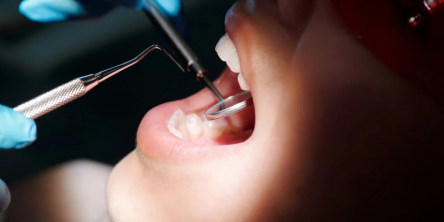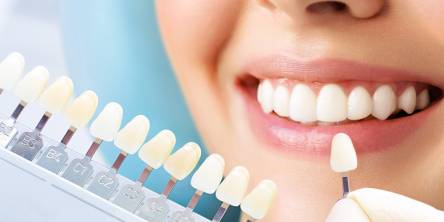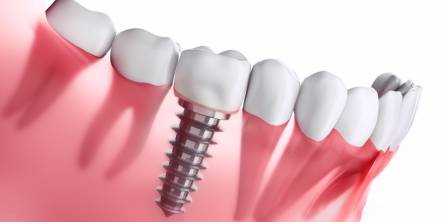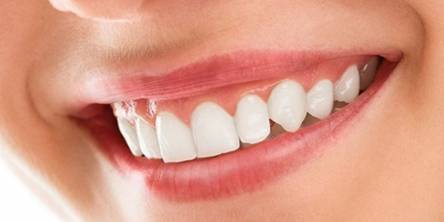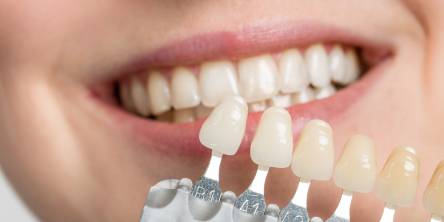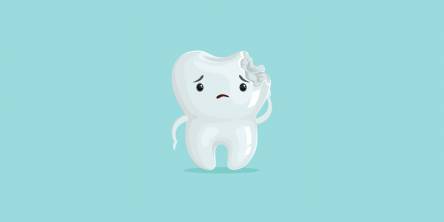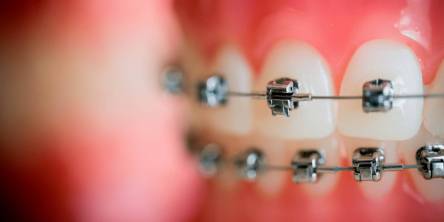How Can You Benefit From Crown Lengthening?
Most individuals have heard the term "dental crown" before. However, few people understand crown lengthening or why it is necessary. Dental crown lengthening is frequently an essential step in preparing your teeth for a dental crown.
Dental crown lengthening is the removal of gum tissue, bone, or both to reveal more of the tooth's structure.
You may have a broken tooth at the gum line or a decaying tooth. After your dentist eliminates the tooth decay, there may not be enough tooth structure above the gum line to support a dental crown (or even a large filling). Ill-fitting dental crowns, which lack enough structure to grasp onto, can cause chronic inflammation and irritation. Even worse, tooth decay may penetrate the dental crown, necessitating additional dental treatment. You may lose the tooth completely.
Crown lengthening, while less common, can also be used cosmetically to alleviate what is known as a "gummy smile." When there is an unusually significant quantity of gum tissue around the top teeth, crown lengthening may be helpful. Your dentist can reveal more of your teeth and shape your gum line to achieve the look you desire.
What to Expect From Dental Crown Lengthening Procedure?
Dental crown lengthening is a form of oral surgery. A periodontist - a dentist who specializes in treating gum and bone tissue problems - performs the procedure. Crown lengthening surgery can be performed on one or more teeth or on the entire gum line, depending on your unique requirements. Crown lengthening surgery is a straightforward treatment that is frequently performed in your periodontist's office under local anesthesia. Sedation dentistry might be administered to reduce dental anxiety during the process.
If you have a temporary crown, the periodontist will remove it before the surgery and replace it afterward. The periodontist begins by making cuts in the tissue to draw the gum away from the teeth. This allows access to the teeth's roots and the bone around them. In certain circumstances, removing a small amount of gum tissue is sufficient. In most cases, a part of the bone should be removed.
After exposing enough of the tooth's anatomy, the periodontist will clean the region with saline water and stitch the gums together. Some periodontists will wrap the incision in a specific bandage.
Recovery Period
Dental crown lengthening is considered a minor procedure with little pain. If that pain persists, the periodontist will issue a prescription. You will also be given a special mouth rinse and dental care instructions to help you care for your teeth while recovering. You should follow your usual dental hygiene practice, but avoid brushing the gums in the afflicted area.
Your periodontist will remove the stitches around one week after crown lengthening surgery. Your gums may need to heal a little longer before your tooth can be fitted with the final dental crown.
Crown lengthening, like any other surgical procedure, carries dangers. You may have bleeding or become infected following surgery. Because your tooth's root is exposed, you may be more sensitive to heat and cold. This will go away after the dental crown is in place. Removing bone from around a tooth can help it loosen up. If the tooth is ever lost, inserting dental implants in that location may be difficult.
If your dentist suggests a dental crown, inquire whether you will also require crown lengthening. Depending on how many good teeth your dentist has to deal with, crown lengthening may be required to achieve the best results.
Here are some tips on how to take care of your oral cavity on this journey.
- Brush your teeth twice a day, every day;
- Do not smoke;
- Floss daily;
- Schedule regular checkups and cleanings;
- Eat a balanced diet.
Similar Articles
Dentists successfully use dental sealants to prevent patients' teeth from serious deterioration in many cases. This inexpensive prophylactic medication is usually recommended for younger children, but it can also benefit adults.
Pregnancy is undoubtedly an exciting period in one's life. All expectant mothers will agree that as they find out they're expecting, they instantly begin to question if any things were previously safe but are no longer because of the baby. This is particularly true for dental operations.
Cosmetic dentistry has grown in popularity recently, allowing people to improve their smiles and confidence. Despite its rising popularity, cosmetic dentistry has become saturated with myths and misconceptions. This article will debunk the top seven myths, shedding light on the reality behind these common misconceptions.
When you lose an adult tooth, it is critical for your dental health that you replace it. If you don't, you risk teeth moving, increased oral instability, and tooth loss. It could harm the underlying bone. An endosteal implant, often known as a dental implant, is one option for restoring missing teeth.
A smile makeover is a process that improves the appearance of the smile by combining various cosmetic dental procedures, such as braces or Invisalign to correct misaligned teeth, teeth whitening to brighten up discolored teeth, and a dental crown or porcelain veneers to cover unsightly flaws like chips or discolored spots.
Dental veneers are one of the most expedient ways to achieve the bright, healthy smile of your dreams. Whether you are self-conscious about stained teeth or want to conceal a chipped tooth, veneers can provide a satisfying solution.
When you experience dental pain, you should be aware of whether you require emergency dental care and whether your dental insurance policy covers you. Not all dental disorders necessitate rapid treatment. A toothache, a damaged tooth, or pain from a dental crown are severe dental problems, but they are not always emergencies, so it is best to plan ahead of time.
Tooth decay, commonly known as dental caries or cavities, is a common oral health problem that affects people of all ages. While much has been discovered about the causes and prevention of dental decay, numerous myths still exist
Damon braces have gained popularity in orthodontic treatment because of their innovative design and efficiency in correcting tooth misalignments. While traditional braces have long been the preferred option, Damon braces provide a more comfortable and barely noticeable alternative.

